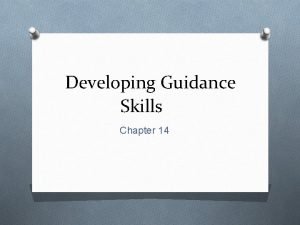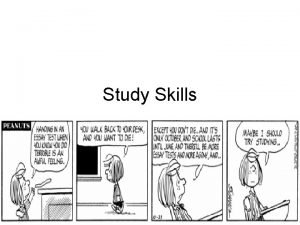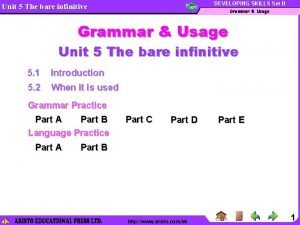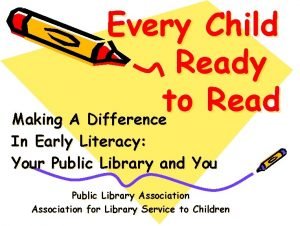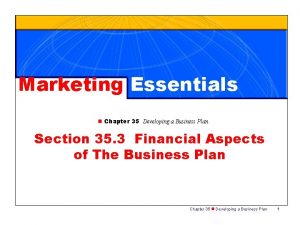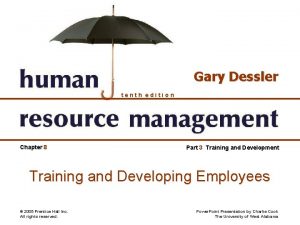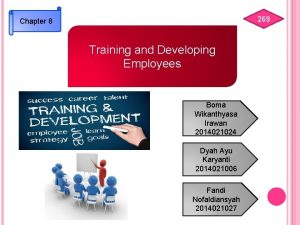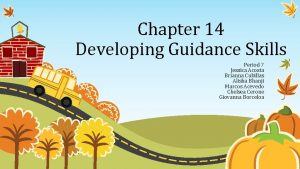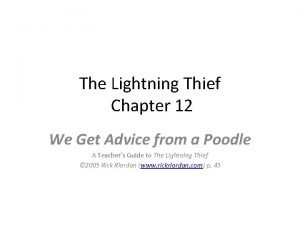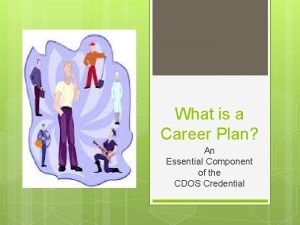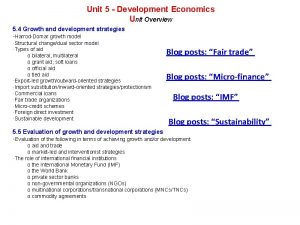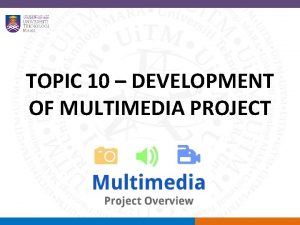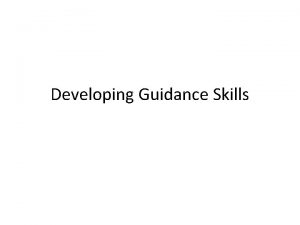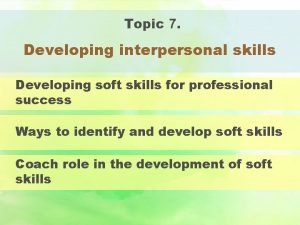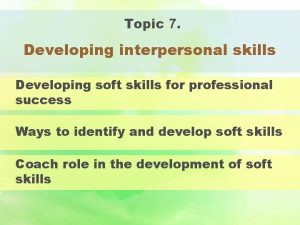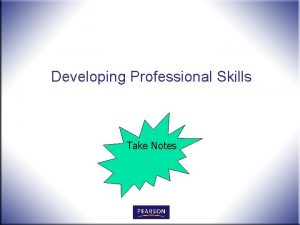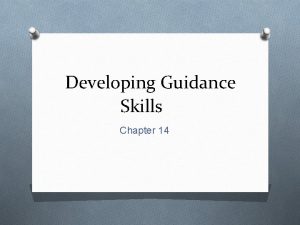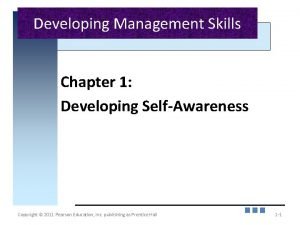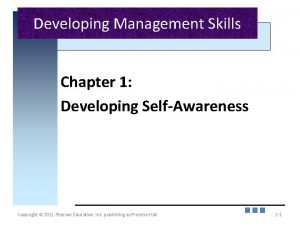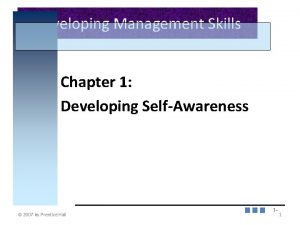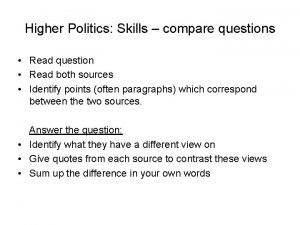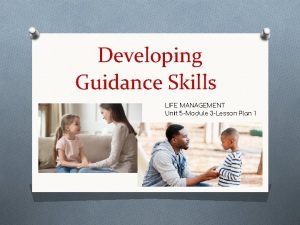Chapter 14 Developing Guidance Skills GUIDANCE q READ





































- Slides: 37

Chapter 14 Developing Guidance Skills

GUIDANCE q READ: Building Positive Teacher-Child Relationships (What Works Briefs #12) § How is building relationships important to developing guidance? q What do you think the difference is between § Direct guidance § Indirect guidance

Objectives q Identify goals of effective guidance. q List personality traits of effective early childhood teachers. q Describe principles of direct and indirect guidance. q Explain various techniques for effective guidance. q Summarize ways to promote a positive selfconcept in each child.

Goals of Guidance q Guidance: direct and indirect actions used by an adult to help children develop appropriate behavior patterns q Prosocial behavior: acts of kindness that benefit others

Guidance and You q Effective early childhood teachers encourage and show interest in children. q Teachers should interact often and ask openended questions. q Children imitate behavior, so model positive behaviors.

Preparing for Guidance q The first step is observation of the children. q Plan with other teachers. q Learn about family and cultural variations in children’s nonverbal behavior. § Nonverbal behavior: actions rather than words q Share observations, feelings, and suggestions. q Do not talk to other adults while you are teaching unless it is important. q Sit with the children whenever possible.

Direct Guidance q Indirect guidance: involves outside factors that influence behavior q Direct guidance: involves nonverbal and verbal actions q Facial expressions can communicate a variety of messages.

Use Simple Language q Young children have limited vocabularies.

Speak in a Relaxed Way q Speak in a calm, quiet, relaxed tone of voice. q Save loud voices for emergencies.

Be Positive q Guide children by telling them what to do, not what not to do.

Offer Choices with Care q Children should be offered a choice only when you want them to have a choice. q Do not try to get children to change their minds. You would then be telling them it was really not a choice.

Encourage Independence and Cooperation q Give children the least amount of help they need. q Children only become independent if allowed the opportunity. q Encourage children to work together.

Be Firm q Be firm, but at the same time, speak in a quiet voice. q Effective guidance requires firmness.

Be Consistent q Children are good at testing adults. q Make sure you are not only consistent with one child but all children.

Provide Time for Change q Without time for change, children become confused. q Time will allow the children to prepare themselves for new activities and a new environment.

Consider Feelings q Children need to recognize, understand, and express their feelings. q Feelings are best discussed in small groups or individually. q Young children need to learn how to handle mistakes.

Intervene When Necessary q Interrupt only when you can add to the knowledge of your students or promote their safety. q Safety intervention requires words and action. q The children need to be friends with all children. q Do not allow children to be excluded because of age, culture, or gender. q You must intervene when you hear something impolite. q Sharing also may require an intervention.

Indirect Guidance q Physical setup of a center is a form of indirect guidance. q Well-planned setup makes supervision easier. q Large open areas are the best. q Independence should be a learning objective regardless of age.

Techniques for Effective Guidance q Verbal environment: all communication that occurs within a setting q Guidance techniques include § § § § positive reinforcement use of consequences warning time-out persuading praising affirming suggesting § § § § prompting I-messages redirecting modeling listening ignoring encouraging

Positive Reinforcement q Positive reinforcement: rewarding positive behavior q Be careful to only reward behaviors you want repeated.

Using Consequences q Consequence: a result that follows an action or behavior q Natural consequences: experiences that follow naturally as a result of a behavior q Logical consequences: consequences deliberately set up by an adult to show what will happen if a limit is not followed q Make sure the child is aware of the limits.

Warning q When children fail to follow a limit, you remind them that they are misbehaving and their behavior will have consequences. q Warn only once. q If the behavior continues, follow through with consequences. q Use a firm voice that reflects your displeasure.

Time-Out q Time-out: guidance technique that involves moving a child away from others for a short period of time q Time-out is only used when the child’s disruptive behavior cannot be ignored. q To be effective, tell the children in advance what the consequences of bad behavior will be.

I-Messages q I-message: tells the child how you feel about his or her behavior q I-messages should include three parts: § the child’s behavior § your feelings about the behavior § the effects of the behavior

Effective Praise q Effective praise is specific and individualized to fit the situation and child. q The goal is to make the child feel capable and valued. q Remember the following: § § Make the praise age appropriate. Give praise immediately. When praising, establish eye contact. Do not overuse praise.

Suggesting q Suggesting means placing thoughts for consideration into children’s minds. q This in turn leads to action. q Always make suggestions positive.

Prompting q Prompting: make a verbal or nonverbal suggestion that requires a response; used either to stop an unacceptable action or start an acceptable one q Make prompting simple and noncritical.

Persuading q By persuading, you encourage children to act or behave in a certain way by appealing to their needs and wants. q Link behavior with the children’s feelings.

Redirecting q Redirecting: diverting, or turning, attention in a different direction q Redirection encourages children to express themselves in more socially acceptable ways.

Modeling q Modeling: verbal and nonverbal actions by one person, which then set an example for others q Set an example by modeling prosocial behavior.

Listening q Listening involves giving the children your full attention. q Active listening: listening to what is said, then repeating it

Ignoring q Do not encourage inappropriate behavior. q If a child’s behavior is not dangerous, avoid giving them attention. q Do not look directly at the child. q Avoid acknowledging the behavior. q If you choose to ignore the behavior, tell the child what behavior you are ignoring and what behavior you desire.

Encouraging q Encouraging is a technique that helps children believe in themselves. q Examples include the following: § § § You can do it all by yourself! You know how it works. I know you can fix it. You were able to do it last week. You must be pleased.

Prompting Positive Self-Concept q A child’s self-concept includes the qualities the child believes he or she possesses. q Self-concept is mirrored in behavior. q Children with positive self-concepts perceive themselves as able and important. q You can promote or undermine a child’s selfconcept with your words and actions. q Plan activities that make children feel good about themselves and their abilities.

Summary q Effective guidance skills are necessary for teaching. q Self-control is the long-term goal of guidance. q Child guidance may be direct or indirect. q When guiding children’s behavior, your actions should always promote a positive self-concept in each child.

Review q Discuss ways to promote positive self-concept.

Articles q “What Works Briefs” § #14 The role of time out in a comprehensive approach for addressing challenging behaviors of preschool children” § #15 Using choice and preference to promote improved behavior”
 Direct vs indirect guidance
Direct vs indirect guidance Developing guidance skills chapter 14
Developing guidance skills chapter 14 Chapter 17:3 completing job application forms
Chapter 17:3 completing job application forms Developing effective study skills
Developing effective study skills Grammar usage set b答案
Grammar usage set b答案 What is reading
What is reading Developing facilitation skills
Developing facilitation skills Balanced occlusion formula
Balanced occlusion formula Every child ready to read six skills
Every child ready to read six skills Interpersonal and intrapersonal skills examples
Interpersonal and intrapersonal skills examples Types of skill
Types of skill Ontario skills passport essential skills
Ontario skills passport essential skills Chapter 35 developing a business plan
Chapter 35 developing a business plan Chapter 8 training and developing employees
Chapter 8 training and developing employees Chapter 15 developing fraction concepts
Chapter 15 developing fraction concepts Chapter 35 developing a business plan
Chapter 35 developing a business plan Chapter 2 developing marketing strategies and plans summary
Chapter 2 developing marketing strategies and plans summary Chapter 8 training and developing employees
Chapter 8 training and developing employees Chapter 3 lesson 1 developing your self esteem
Chapter 3 lesson 1 developing your self esteem Developing a vast wilderness
Developing a vast wilderness Developing and managing products
Developing and managing products The marketing plan the central instrument
The marketing plan the central instrument Direct and indirect guidance chapter 14
Direct and indirect guidance chapter 14 Chapter 18a guidance letter
Chapter 18a guidance letter How to read literature like a professor chapter 17
How to read literature like a professor chapter 17 How to read literature like a professor chapter 14
How to read literature like a professor chapter 14 Charlotte's web chapter 13 read aloud
Charlotte's web chapter 13 read aloud Morphodite in to kill a mockingbird
Morphodite in to kill a mockingbird How to read literature like a professor chapter 4
How to read literature like a professor chapter 4 Flights of fancy how to read literature
Flights of fancy how to read literature Lightning thief chapter 12 summary
Lightning thief chapter 12 summary How to read literature like a professor quest
How to read literature like a professor quest Pretest: developing an academic and career plan
Pretest: developing an academic and career plan Application of harrod-domar model in developing countries
Application of harrod-domar model in developing countries Comparative education in developed countries
Comparative education in developed countries Section quiz 4-3 developing federalism
Section quiz 4-3 developing federalism Multimedia projects ideas
Multimedia projects ideas What is rea model
What is rea model

